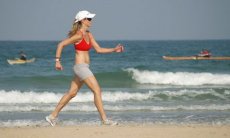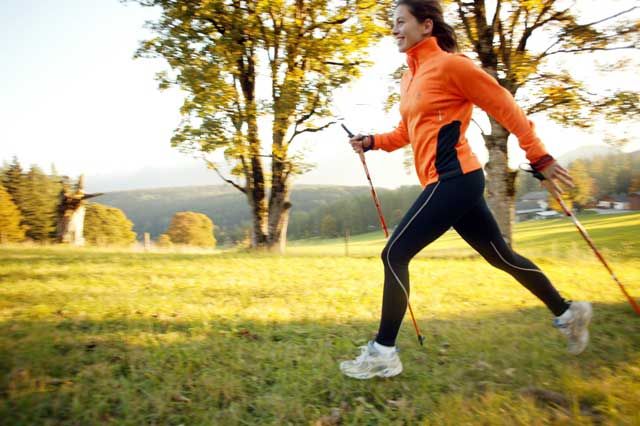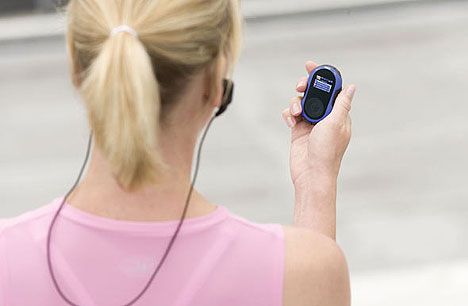Walking is a tool for weight loss and well-being
Last reviewed: 23.04.2024

All iLive content is medically reviewed or fact checked to ensure as much factual accuracy as possible.
We have strict sourcing guidelines and only link to reputable media sites, academic research institutions and, whenever possible, medically peer reviewed studies. Note that the numbers in parentheses ([1], [2], etc.) are clickable links to these studies.
If you feel that any of our content is inaccurate, out-of-date, or otherwise questionable, please select it and press Ctrl + Enter.

The most reliable and non-sluggish way to lose weight is walking. Recently, this method of getting rid of extra pounds is winning more and more fans. In particular, it will suit those people who are opposed to power and vigorous exercise. Despite the fact that we are accustomed to perceive walking as a normal mode of movement, this can be an excellent alternative for those who do not like to play sports, and who do not have access to the gym.
In order for walking to become an effective means of reducing body weight, several tips should be taken into account:
Small steps
Walking in small (but not shining) steps will help reduce unnecessary strain on the shin. You can accelerate your pace by alternating a quick step with a slow one. Walking fast is desirable daily from 30 to 60 minutes.
Increase the distance

The more you walk, the better. Increasing the distance with each day, you can easily overcome even great distances and feel how to improve your well-being. For those who have just started training, this will help strengthen the muscles of the legs.
Stretching

Before starting workout, remember to stretch your muscles well and warm up. This applies not only to the legs, but also to the whole body. Do not be deceived by the fact that a person walks every day and therefore one can do without a warm-up. Intensive walking without stretching can cause pain the next morning.
Watch the pace
With each workout, increase the pace of walking. Do not go with the speed of light on the first day. Increase the pace gradually.
Move your whole body

Do not go like a robot, relax, empty your movements will be natural and free. Keep the elbows closer to the body, and do not drill with the eyes of the ground - keep the chin parallel to the surface.
Do not forget about the breaks
Your body needs rest, so do not force yourself to go through force, alternate stress and rest. You can also leave your legs resting and switch to the upper body.
 [1]
[1]
Watch for food
If you train intensively, do not forget to monitor your diet. For women who lead an active lifestyle, the daily rate should be about 1200 calories, and for men - 1500-1600 calories per day.
Keep track of your progress

In this case, you will need a pedometer - a device that will give you full information about how many steps you have gone through the whole day and what distance you have overcome. So you can compare the load, increase the intensity and track your progress.
Make a Variety
Alternate fast and slow walking. For example, one day you can go at a rapid pace, but overcome a short distance, and the next day you can slow down, but go a long distance. This will be useful for physical health and help avoid routine workouts.
Be careful with food
The first few days after the start of training you will most likely be hungry, so be careful and careful! Do not eat too much and replace heavy food with light salads or fruits, otherwise all efforts will be futile.
Questions that arise most often:
- Do you need special shoes for training?
No, for walking it's important that the shoes are comfortable, you do not need to buy any special ones. The only exception may be a trauma that bothers you, for example, an ankle injury. Then, before the start of training, you need to consult a doctor and pick up those shoes that will make your work as easy as possible. Naturally, he says too much about the unfitness for shoes such as slippers and sandals.
- Can I jog in between walking?
Yes. You can combine 15-minute walking and, for example, a 5-minute run. However, at the end of the run you should not sit down and rest, you should continue walking to avoid tired legs.
Can I listen to music while walking?
Of course, and even useful. A certain musical rhythm will set you the tempo. If you decide to speed up the pace, then energetic music will only cheer you up and motivate you to accelerate, slow, respectively, vice versa.
- Joint training. Good or bad?
Not always. Walking in company with someone will be effective. Despite the fact that this is some kind of moral support, it will still be difficult to keep from talking. This is what can put the effectiveness of training. Most likely, joint walking will turn into a leisurely walk with talk.
What if I had knee surgery or any other kind of lower limb injury?
In this case, you need a mandatory consultation with your doctor. Even if the trauma does not bother you, uncontrolled loads can cause pain and provoke serious problems.
Walking is an excellent option for maintaining a good shape and feeling good!
